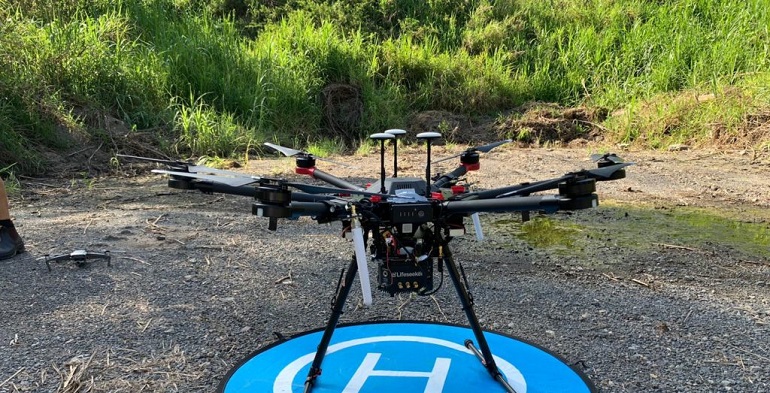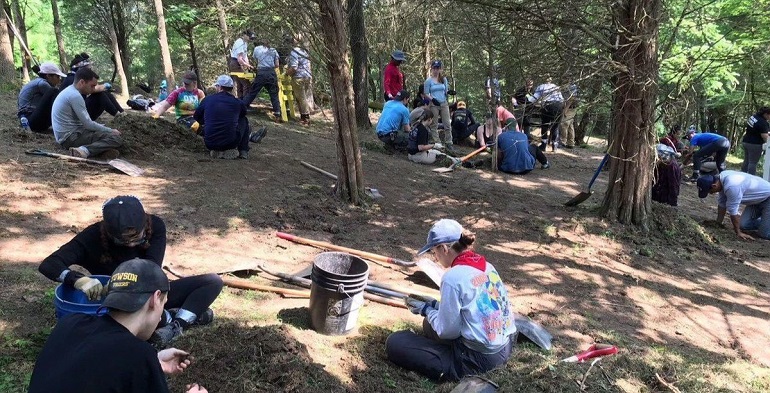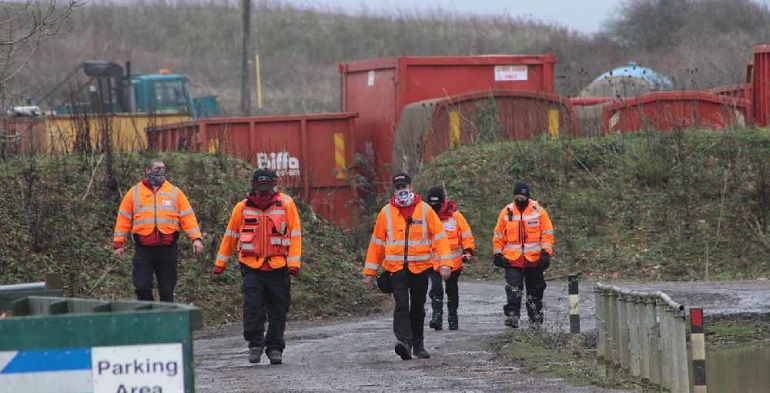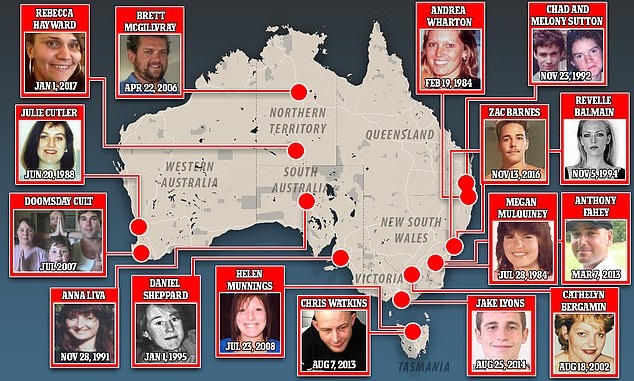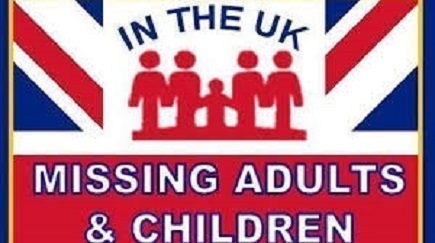Missing
Jonnie Renee White



Jonnie, approximately 1998; Age when reported missing: 37 (approximately 2018)
Date and time person was reported missing : 07/19/1998
Missing location (approx) :
Kodiak, Alaska
Missing classification : Endangered Missing
Gender : Female
Ethnicity :
White
DOB : 12/31/1981 (39)
Age at the time of disappearance: 16 years old
Height / Weight : 5'3, 105 pounds
Description, clothing, jewerly and more : Black stretch pants, a blue and black cut-off t-shirt with an imAge at the time of disappearance: of the planet Earth imprinted on the front, and black sandals.
Distinguishing characteristics, birthmarks, tattoos
: Caucasian female. Red/brown hair, brown eyes. Jonnie's hair at the time of her 1998 disappearance was longer on the sides than is depicted in the above pictures. She may go by her middle name, Renee. She has a mole near her navel and a tattoo.
Information on the case from local sources, may or may not be correct : Jonnie resided with her mother in Kodiak, Alaska in 1998. She was hired to babysit Sharon Dawson Raikoglo's young child while the latter attended a music festival in July 1998. Raikoglo and her then-boyfriend, Roland Scott Tennison, camped overnight with Jonnie and the child at the Pasagshak Bay State Recreation Site on July 18. The area is approximately 40 miles north of the city of Kodiak.
The couple stated they planned to drink alcohol at the music festival and planned to use Jonnie as a designated driver if necessary. Jonnie had worked for Raikoglo several times before.
Tennison told authorities that Jonnie accompanied him to collect firewood from the beach at approximately midnight on July 19. He said his four-wheel drive Ford pickup truck became stuck in the sand near the Narrow Cape area, three or four miles from the campsite, shortly afterwards. He claimed that he and Jonnie decided to sleep inside the vehicle, since neither of them were dressed for the chilly weather.
They both went to sleep at approximately 4:00 a.m. Tennison stated Jonnie had disappeared by the time he awoke at 10:00 a.m., and at first he assumed she had walked back to the campsite. Jonnie has never been heard from again.
Raikoglo contacted authorities when Tennison and Jonnie failed to return several hours after departing the campsite. Officials had launched a search by the time Tennison arrived later in the morning. No evidence related to Jonnie's whereabouts was found inside the park.
When authorities searched Tennison's truck and the area around where it was stuck, they found fire marks in the sand, but no firewood in the truck. No tEthnicity : s of blood or semen were found in the truck or on Tennison, and no alcohol or drugs were located.
In July 2000, a state coroner's jury concluded that Jonnie died as the result of undetermined causes on the night of her disappearance. No physical evidence was discovered linking anyone to her case.
Jonnie's mother filed a wrongful death civil lawsuit against Raikoglo and Tennison in February 2001. The suit alleged that Tennison may have been intoxicated on July 19 and injured Jonnie while they drove along the beach. Jonnie's mother stated she did not believe Tennison's story and thinks Jonnie probably died at the campsite. She stated Raikoglo apologized to her after Jonnie's disappearance and said she hadn't meant for it to happen.
Raikoglo was declared liable for Jonnie's presumed death in June 2003. Tennison, who now lives in Arkansas, did not defend himself against the suit. He refused to answer any questions about the night Jonnie disappeared, citing his Constitutional right against self-incrimination. A judge ruled in Jonnie's mother's favor in August 2003, ordering Tennison to pay her her $1.5 million in damAge at the time of disappearance: s.
Neither Tennison nor Raikoglo have been charged with criminal wrongdoing in Jonnie's case. She had dropped out of high school by the time of her disappearance, and was trying to get a job. She wanted to save enough money to move in with her boyfriend in their own home.
Jonnie's boyfriend was away on a fishing trip at the time of her disappearance, but due back soon, and Jonnie wrote many hopeful journal entries about their relationship and her future. She did not drink alcohol in 1998, but she did occasionally smoke marijuana.
Jonnie's disappearance remains unsolved.
Other information and links : ncy
Alaska State Troopers
907-225-5118
September 2021 updates and sources
Alaska Department of Public Safety
The Kenai Peninsula Online
The AnchorAge at the time of disappearance: Daily News
Missing Children�s Statistics
One Missing Child Is One Too Many
The lack of a common definition of �missing child,� and a common response to the issue, results in few reliable statistics on the scope of the problem around the world.
Even with this challenge, we know that:
In Australia, an estimated 20,000 children are reported missing every year.
Australian Federal Police, National Coordination Centre.
In Canada, an estimated 45,288 children are reported missing each year.
Government of Canada, Canada�s Missing � 2015 Fast Fact Sheet.
In Germany, an estimated 100,000 children are reported missing each year.
Initiative Vermisste Kinder.
In India, an estimated 96,000 children go missing each year.
Bachpan Bachao Andolan, Missing Children of India.
In Jamaica, an estimated 1,984 children were reporting missing in 2015.
Jamaica�s Office of Children�s Registry
In Russia, an estimated 45,000 children were reported missing in 2015.
Interview with Pavel Astakhov MIA �Russia Today�, Apr. 4, 2016.
In Spain, an estimated 20,000 children are reported missing every year.
Spain Joins EU Hotline for Missing Children, Sep. 22, 2010.
In the United Kingdom, an estimated 112,853 children are reported missing every year.
National Crime Agency, UK Missing Persons Bureau.
In the United States, an estimated 460,000 children are reported missing every year.
Federal Bureau of Investigation, Missing Children�s Statistics
One Missing Child Is One Too Many
The lack of a common definition of �missing child,� and a common response to the issue, results in few reliable statistics on the scope of the problem around the world.
Even with this challenge, we know that:
In Australia, an estimated 20,000 children are reported missing every year.
Australian Federal Police, National Coordination Centre.
In Canada, an estimated 45,288 children are reported missing each year.
Government of Canada, Canada�s Missing � 2015 Fast Fact Sheet.
In Germany, an estimated 100,000 children are reported missing each year.
Initiative Vermisste Kinder.
In India, an estimated 96,000 children go missing each year.
Bachpan Bachao Andolan, Missing Children of India.
In Jamaica, an estimated 1,984 children were reporting missing in 2015.
Jamaica�s Office of Children�s Registry
In Russia, an estimated 45,000 children were reported missing in 2015.
Interview with Pavel Astakhov MIA �Russia Today�, Apr. 4, 2016.
In Spain, an estimated 20,000 children are reported missing every year.
Spain Joins EU Hotline for Missing Children, Sep. 22, 2010.
In the United Kingdom, an estimated 112,853 children are reported missing every year.
National Crime Agency, UK Missing Persons Bureau.
In the United States, an estimated 460,000 children are reported missing every year.
Federal Bureau of Investigation, NCIC.
This, however, is only a snapshot of the problem. In many countries, statistics on missing children are not even available; and, unfortunately, even available statistics may be inaccurate due to: under-reporting/under-recognition; inflation; incorrect database entry of case information; and deletion of records once a case is closed.
The lack of numbers, and the discrepancy in the numbers that do exist, is one of the key reasons why ICMEC developed and advocates for the Model Missing Child Framework, which assists countries with building strong, well-rounded national responses, and facilitates more efficient investigations, management, and resolution of missing children cases.
We firmly believe that one missing child is one too many, and we are committed to improving the global understanding of and response to missing and abducted children.
Here is a look at missing children in the United States. There are several different types of missing children: runaways, family abductions, lost or �thrown away� and non-family abductions. Advances in technology, communications through public alerts and greater cooperation from law enforcement have facilitated the recovery process.
Statistics
According to the FBI�s National Crime Information Center (NCIC) Missing Person File, there are 89,637 active missing person records, of which juveniles under the age of 18 account for 30,396 (34%) of the records. (as of December 31, 2020)
AMBER Alert
�AMBER (America�s Missing: Broadcast Emergency Response) Alerts are emergency messages broadcast when a law enforcement agency determines that a child has been abducted and is in imminent danger. The broadcasts include information about the child and the abductor, including physical descriptions as well as information about the abductor�s vehicle - which could lead to the child�s recovery.�
The AMBER Alert system began in 1996 and was named in honor of Amber Hagerman, a 9-year-old who was abducted in Arlington, Texas, and murdered.
All 50 states, the District of Columbia, Puerto Rico, and the US Virgin Islands have AMBER Alert plans in place to help find missing children in danger.
As of December 2020, the AMBER Alert program has been credited with the safe recovery of 1029 children..
This, however, is only a snapshot of the problem. In many countries, statistics on missing children are not even available; and, unfortunately, even available statistics may be inaccurate due to: under-reporting/under-recognition; inflation; incorrect database entry of case information; and deletion of records once a case is closed.
The lack of numbers, and the discrepancy in the numbers that do exist, is one of the key reasons why ICMEC developed and advocates for the Model Missing Child Framework, which assists countries with building strong, well-rounded national responses, and facilitates more efficient investigations, management, and resolution of missing children cases.
We firmly believe that one missing child is one too many, and we are committed to improving the global understanding of and response to missing and abducted children.
Here is a look at missing children in the United States. There are several different types of missing children: runaways, family abductions, lost or �thrown away� and non-family abductions. Advances in technology, communications through public alerts and greater cooperation from law enforcement have facilitated the recovery process.
Statistics
According to the FBI�s National Crime Information Center (Missing Children�s Statistics
One Missing Child Is One Too Many
The lack of a common definition of �missing child,� and a common response to the issue, results in few reliable statistics on the scope of the problem around the world.
Even with this challenge, we know that:
In Australia, an estimated 20,000 children are reported missing every year.
Australian Federal Police, National Coordination Centre.
In Canada, an estimated 45,288 children are reported missing each year.
Government of Canada, Canada�s Missing � 2015 Fast Fact Sheet.
In Germany, an estimated 100,000 children are reported missing each year.
Initiative Vermisste Kinder.
In India, an estimated 96,000 children go missing each year.
Bachpan Bachao Andolan, Missing Children of India.
In Jamaica, an estimated 1,984 children were reporting missing in 2015.
Jamaica�s Office of Children�s Registry
In Russia, an estimated 45,000 children were reported missing in 2015.
Interview with Pavel Astakhov MIA �Russia Today�, Apr. 4, 2016.
In Spain, an estimated 20,000 children are reported missing every year.
Spain Joins EU Hotline for Missing Children, Sep. 22, 2010.
In the United Kingdom, an estimated 112,853 children are reported missing every year.
National Crime Agency, UK Missing Persons Bureau.
In the United States, an estimated 460,000 children are reported missing every year.
Federal Bureau of Investigation, NCIC.
This, however, is only a snapshot of the problem. In many countries, statistics on missing children are not even available; and, unfortunately, even available statistics may be inaccurate due to: under-reporting/under-recognition; inflation; incorrect database entry of case information; and deletion of records once a case is closed.
The lack of numbers, and the discrepancy in the numbers that do exist, is one of the key reasons why ICMEC developed and advocates for the Model Missing Child Framework, which assists countries with building strong, well-rounded national responses, and facilitates more efficient investigations, management, and resolution of missing children cases.
We firmly believe that one missing child is one too many, and we are committed to improving the global understanding of and response to missing and abducted children.
Here is a look at missing children in the United States. There are several different types of missing children: runaways, family abductions, lost or �thrown away� and non-family abductions. Advances in technology, communications through public alerts and greater cooperation from law enforcement have facilitated the recovery process.
Statistics
According to the FBI�s National Crime Information Center (NCIC) Missing Person File, there are 89,637 active missing person records, of which juveniles under the age of 18 account for 30,396 (34%) of the records. (as of December 31, 2020)
AMBER Alert
�AMBER (America�s Missing: Broadcast Emergency Response) Alerts are emergency messages broadcast when a law enforcement agency determines that a child has been abducted and is in imminent danger. The broadcasts include information about the child and the abductor, including physical descriptions as well as information about the abductor�s vehicle - which could lead to the child�s recovery.�
The AMBER Alert system began in 1996 and was named in honor of Amber Hagerman, a 9-year-old who was abducted in Arlington, Texas, and murdered.
All 50 states, the District of Columbia, Puerto Rico, and the US Virgin Islands have AMBER Alert plans in place to help find missing children in danger.
As of December 2020, the AMBER Alert program has been credited with the safe recovery of 1029 children.) Missing Person File, there are 89,637 active missing person records, of which juveniles under the age of 18 account for 30,396 (34%) of the records. (as of December 31, 2020)
AMBER Alert
�AMBER (America�s Missing: Broadcast Emergency Response) Alerts are emergency messages broadcast when a law enforcement agency determines that a child has been abducted and is in imminent danger. The broadcasts include information about the child and the abductor, including physical descriptions as well as information about the abductor�s vehicle - which could lead to the child�s recovery.�
The AMBER Alert system began in 1996 and was named in honor of Amber Hagerman, a 9-year-old who was abducted in Arlington, Texas, and murdered.
All 50 states, the District of Columbia, Puerto Rico, and the US Virgin Islands have AMBER Alert plans in place to help find missing children in danger.
As of December 2020, the AMBER Alert program has been credited with the safe recovery of 1029 children.
A missing person is a person who has disappeared and whose status as alive or dead cannot be confirmed as their location and condition are not known. A person may go missing through a voluntary disappearance, or else due to an accident, crime, death in a location where they cannot be found (such as at sea), or many other reasons. In most parts of the world, a missing person will usually be found quickly. While criminal abductions are some of the most widely reported missing person cases, these account for only 2�5% of missing children in Europe.
By contrast, some missing person cases remain unresolved for many years. Laws related to these cases are often complex since, in many jurisdictions, relatives and third parties may not deal with a person's assets until their death is considered proven by law and a formal death certificate issued. The situation, uncertainties, and lack of closure or a funeral resulting when a person goes missing may be extremely painful with long-lasting effects on family and friends.
Several organizations seek to connect, share best practices, and disseminate information and imAge at the time of disappearance: s of missing children to improve the effectiveness of missing children investigations, including the International Commission on Missing Persons, the International Centre for Missing & Exploited Children (ICMEC), as well as national organizations, including the National Center for Missing & Exploited Children in the US, Missing People in the UK, Child Focus in Belgium, and The Smile of the Child in Greece.
Interactive Missing Person Search Map



